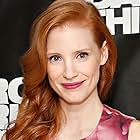
The 3 Guys Podcast
Recorded on 6/24/2023
Movie enthusiasts, have you seen the movie Interstellar? Tune in to our latest podcast episode where we review and discuss the epic sci-fi adventure starring Matthew McConaughey and directed by Christopher Nolan. WARNING: There will be SPOILERS!
The 3 Guys Rating
Rated 3.7 out of 5
Notes From The Show
Interstellar
| November 7, 2014 (United States)
 8.7
8.7
 8.7
8.7

Director: Christopher NolanWriter: Jonathan Nolan, Christopher NolanStars: Matthew McConaughey, Anne Hathaway, Jessica ChastainSummary:
Photos
See all photos >>
Videos
See all videos >>
Cast
See full cast >>
Countries: United States, United Kingdom, CanadaLanguages: EnglishBudget: $165,000,000 (estimated)
Source: imdb.com
Note: All images are property of their respected owners and used for editorial purposes.
Interstellar
| November 7, 2014 (United States)
Director: Christopher NolanWriter: Jonathan Nolan, Christopher NolanStars: Matthew McConaughey, Anne Hathaway, Jessica Chastain
Summary: When Earth becomes uninhabitable in the future, a farmer and ex-NASA pilot, Joseph Cooper, is tasked to pilot a spacecraft, along with a team of researchers, to find a new planet for humans.
Countries: United States, United Kingdom, CanadaLanguages: English
Source: imdb.comDisclaimer: This plugin has been coded to automatically quote data from imdb.com. Not available for any other purpose. All showing data have a link to imdb.com. The user is responsible for any other use or change codes.
































